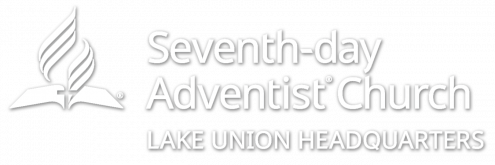Denominational experiences in South Africa, Australia, and the Southland, gave impetus to a concept long maturing in the Lake States, that is, that regionalism was a societal force with which to reckon. As early as 1889, the General Conference (GC) of Seventh-day Adventists (formed in 1863) arranged clusters of state conference into districts (six, then eight). Thus Ohio, Michigan, Indiana, Illinois, Wisconsin, and Ontario, comprised district three with an advisory superintendent.
This arrangement further congealed in 1901. At that time, the GC hardened the districts into union conferences with necessary officers and departmental heads. A cluster of union conference officers became advisors, promoters, and shock absorbers, so that GC officers above them might not wear down with local problems. That overwork might still occur, however, was shown when Arthur G. Daniells was elected head of both the GC and the Lake Union Conference in 1901. ... It was he who first organized, firmed, and staffed the Lake Union....
Except for a short stay in South Bend, the Lake Union Headquarters have been housed near the campus of Andrews University in Berrien Springs, Michigan.
Excerpts from "The Heart of Lake Union," by Emmett K. Vande Vere, originally published in the January 1976 issue of The Lake Union Herald, the official magazine of the Lake Union Headquarters.
Adventist History
Before becoming Seventh-day Adventists, the founders of the denomination were sitting in the pews of other protestant churches in the early-to-mid 1800s. They were farmers, lawyers, teachers…and a handful of Adventism’s prominent early leaders were already involved in pastoral ministry.
The roots of Adventism can be traced back to the Second Great Awakening, which inspired a spirit of revival throughout the United States in the late 1700s and early 1800s. More people had Bibles in their homes and began to study Scripture themselves rather than leaving that to the clergy.
Many biblical truths were brought back into light, such as the seventh-day Sabbath and the literal Second Coming of Christ. Tent meetings and Bible studies led people to a deeper understanding of God’s love and His plans for humanity. People began to crave a more authentic Christian walk, beyond the traditions and rituals that had been routine for so long.
Several separate groups of these devout Christians were dispersed throughout the northeastern United States. But God brought them together, and what began as the “Advent Movement” is now a worldwide Christian protestant denomination with over 20 million members. Discover More
